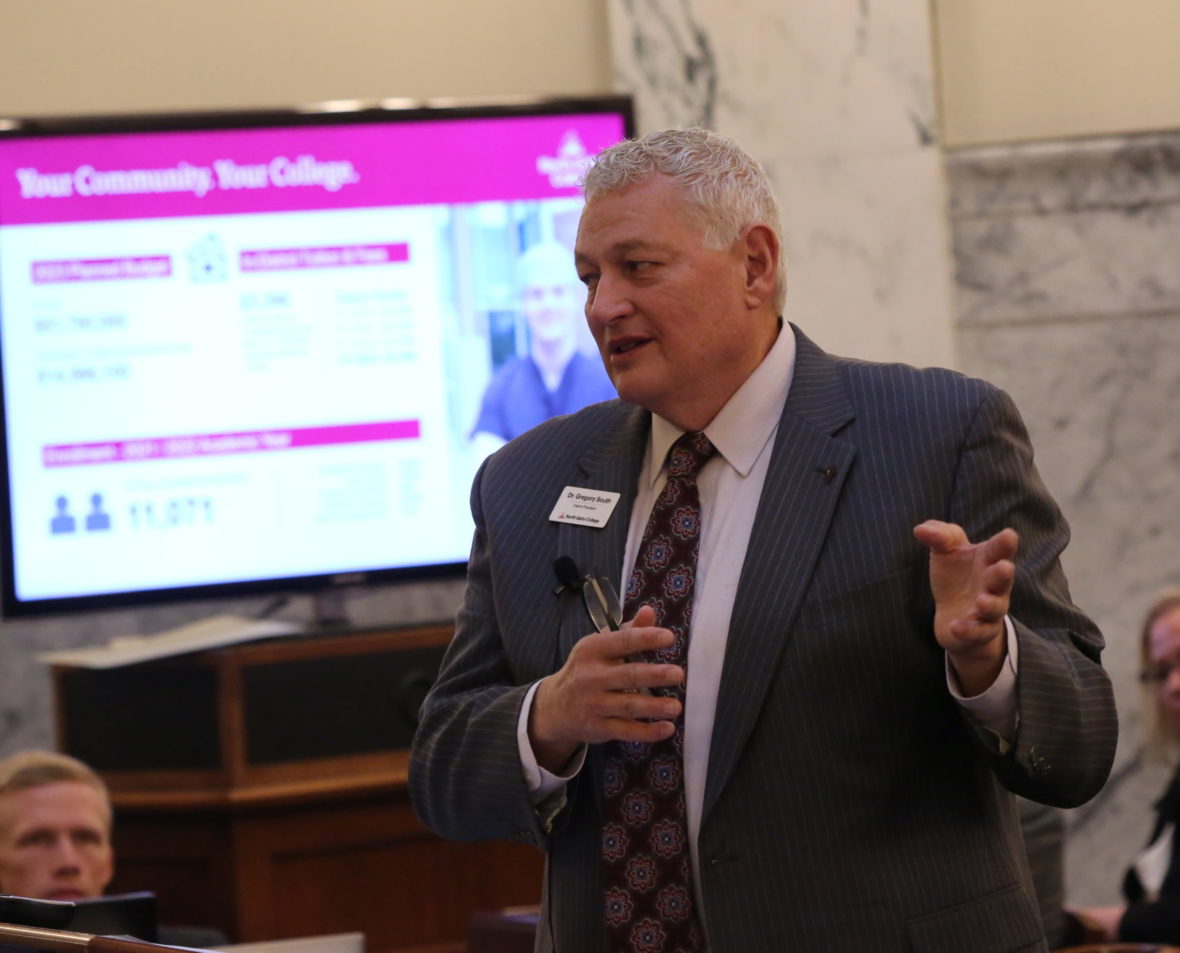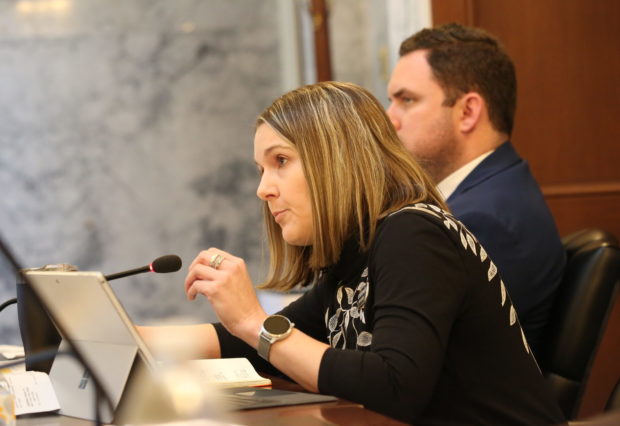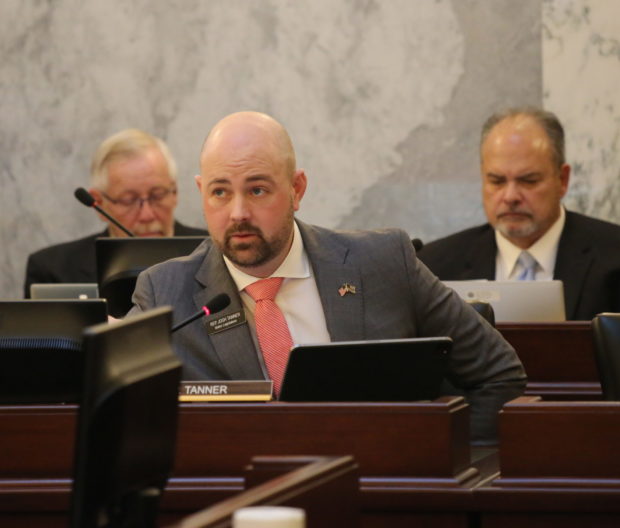
The Statehouse’s chronically cramped budget hearing room was packed as usual Thursday morning — with officials from Idaho’s four community colleges. And an elephant.
And after dispensing with a few basic talking points — the 50th anniversary of a nursing program, a workforce training program partnering with more than 300 businesses — North Idaho College Interim President Greg South addressed the elephant.
“We are fully accredited, and we will remain fully accredited,” said South, seeking to assure lawmakers that NIC is working closely with accreditors ahead of an April site visit. “To be certain, it is a very serious circumstance, but it is not rocket science.”
NIC isn’t in the rocket science business — which is just as well, considering the Coeur d’Alene-based community college’s struggles with political science.
For two years, trustees have squabbled with each other, traded verbal jabs with audience members at tense public hearings, and burned through a procession of administrators. Hired as interim president in December — on a divided board vote, as is NIC’s custom — South is the college’s fourth president in 16 months.
And not even NIC’s only president. South is on the job at a $235,000-a-year salary. Nick Swayne remains on a board-imposed administrative leave, while still pulling down his $230,000-a-year president’s salary.
But since South is on the job and Swayne is in limbo, it fell to South to address the Joint Finance-Appropriations Committee, the Legislature’s powerful budget-writing panel. And to address the ongoing accreditation question — which could leave NIC students shut out of state financial aid and holding worthless credits they can’t transfer to another school.
The implications are enormous for students. But JFAC has a stake. We all do. Idaho’s four community colleges derive some of their money from local property taxes and some money from student tuition and fees, but 36% of the budget comes from the state. This year, that totals $57.5 million, including $14.8 million for NIC.
Most of that money comes from the taxes all Idahoans pay. The rest comes from a cut from the state liquor fund, worth $200,000 per community college. Given NIC’s dysfunction, feel free to insert your own wisecrack here.
But while the state helps fund NIC, the state’s governing role is limited. Gov. Brad Little and his State Board of Education have acknowledged the importance of accreditation, but have essentially deferred to NIC’s locally elected trustees.
JFAC members came ready to ask South some tough questions.

Rep. Britt Raybould, R-Rexburg, drilled down about a potential credit downgrade affecting $7.9 million in debt, and a steep spike in NIC’s insurance rates. Rep. James Petzke, R-Meridian, asked if the damage to NIC’s reputation could affect long-term enrollment. Rep. Josh Tanner, R-Eagle, asked where NIC got the money to pay a settlement to fired president Rick MacLennan.
(Well, Tanner tried to ask, anyway. In an odd twist, co-chair Sen. C. Scott Grow, R-Eagle, cut off Tanner and said the question strayed into personnel matters. Regardless, the answer is already a matter of public record. The college paid out $249,971. The remaining $250,000 came from the Idaho Counties Risk Management Program, the insurance firm that later dumped NIC.)
Give JFAC members some credit for due diligence. This year’s hearing was a marked improvement from NIC’s 2022 appearance before the committee, when embattled Interim President Michael Sebaaly fielded only one softball question about the college’s problems.

If lawmakers didn’t get the severity of the situation a year ago, it’s on their radar now.
And for his part, South tried to answer the lawmakers’ questions.
He told Petzke that the college’s enrollment declines have slowed over the past couple of years — but a 30% drop over the past decade points to some systemic problems. “There are a lot things there; it’s been cumulative over time.”
When asked about a new $137,600-a-year director — hired through short-term federal COVID relief dollars — the newly hired South pledged to look into the issue as soon as he gets back to campus. “I don’t have an answer, and I won’t try to fake an answer.”
And he said NIC has made “demonstrable” progress working with accreditors, who really want to see cooperation from college officials. And even if accreditors move closer to sanctioning NIC, he said, the college would have a chance to make its case.
“They don’t want to pull a school’s accreditation,” he said. “They could move quickly, but we would have time to sort through it.”
To hear for yourself, here’s a link to the raw audio from a brief Idaho EdNews interview with South, after Thursday’s JFAC hearing.
By comparison, the presidents of the other three community colleges had an easy morning before JFAC. They pushed for many of the same budget line items South wants to see: Little’s proposed 4% pay raise and money to offset rising health benefits costs.
Like South, who is seeking $7 million for a law enforcement training facility, College of Western Idaho President Gordon Jones has projects on his wish list. Quipping that CWI’s 140-acre Nampa campus has one building and “about 90-plus soccer fields,” Jones appealed for $10.7 million of state support for a 35,000-square-foot learning hub to consolidate student services.
Other presidents shared some lofty ideals. College of Southern Idaho President Dean Fisher challenged lawmakers, and himself, to not refer to students as “at-risk” — but instead “at-promise” students who will be tomorrow’s nurses and teachers. Said College of Eastern Idaho President Rick Aman, “Community colleges are the first and last opportunity for a lot of our students.”
South too spoke of the future — and a 90-year-old NIC that he wants to see stick around for the next 90 years. But NIC’s present consumes a lot of oxygen. South acknowledged as much Thursday, when he began his presentation by introducing NIC’s five trustees, crammed in close proximity in the front row of the audience.
The optics weren’t lost on Rep. Wendy Horman, R-Idaho Falls, JFAC’s House co-chair. “I see you all sitting on the same bench today. I think that’s a great show of cooperation, in my opinion.”
Board infighting is at the heart of NIC’s problems — administrative churn, enrollment troubles, accreditation questions. Sitting together is one thing. But accreditors have sent a loud message: They want to see trustees working together.
Each week, Kevin Richert writes an analysis on education policy and education politics. Look for it every Thursday.
